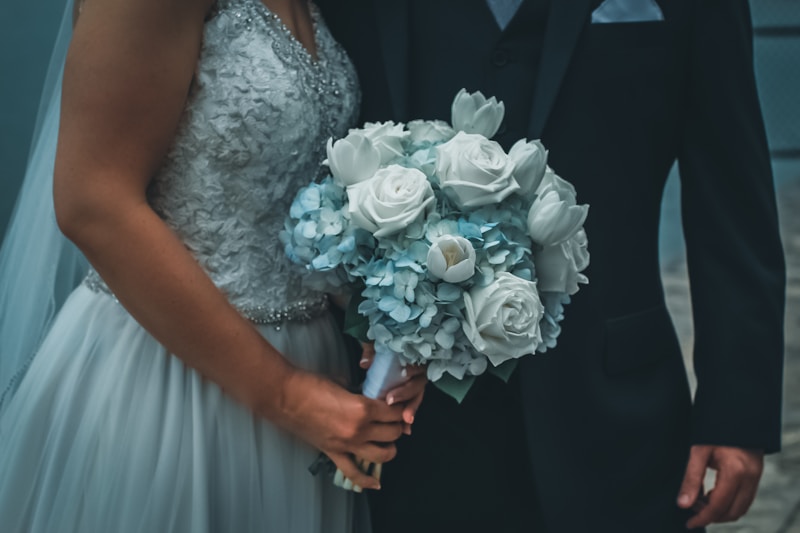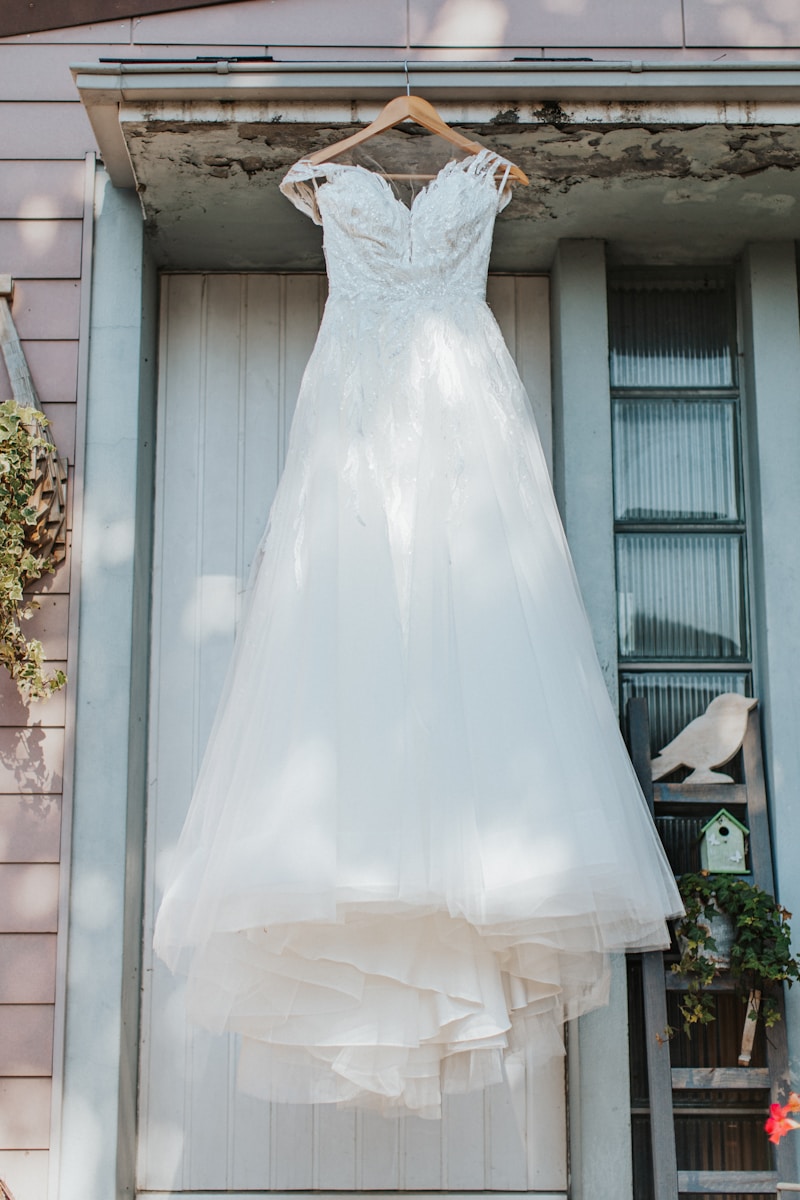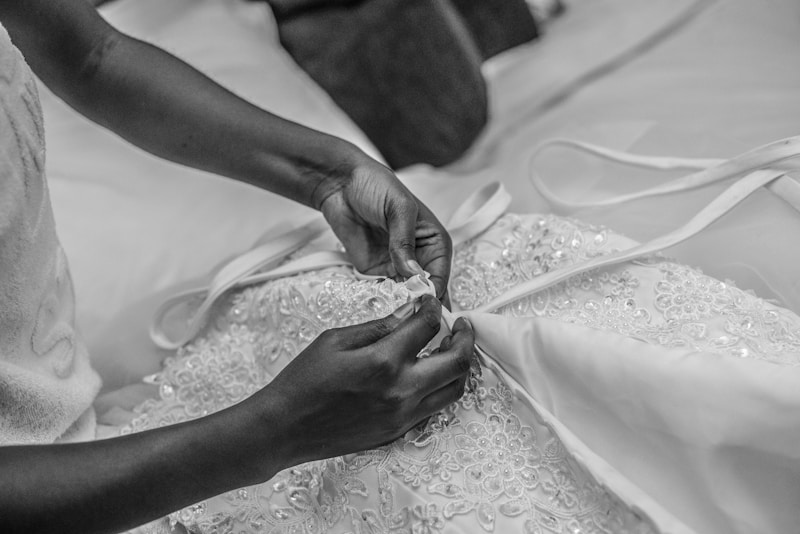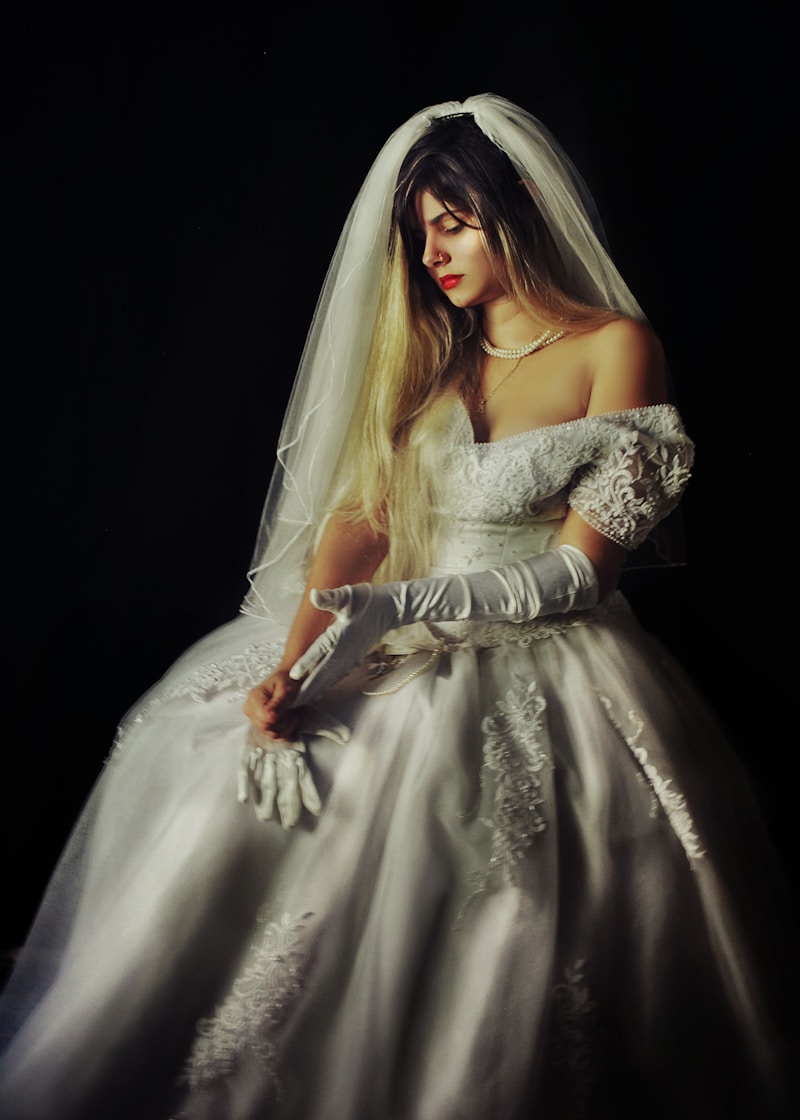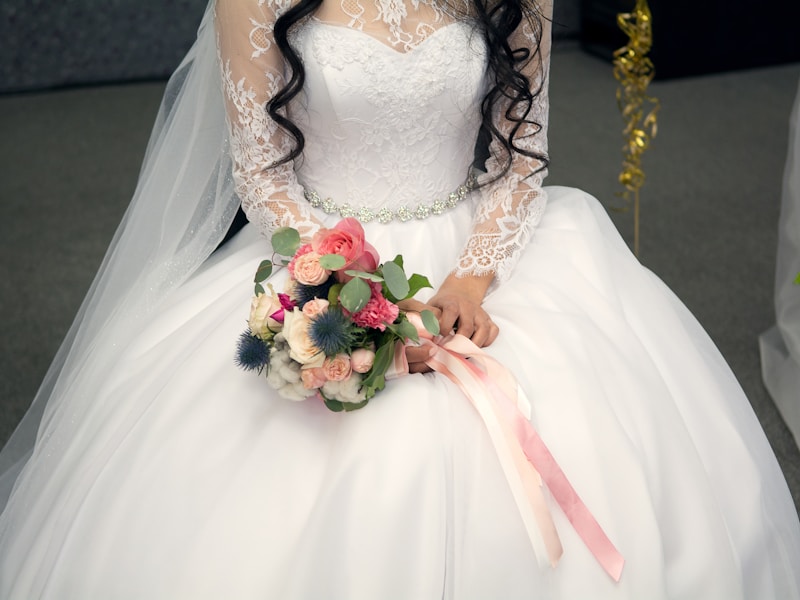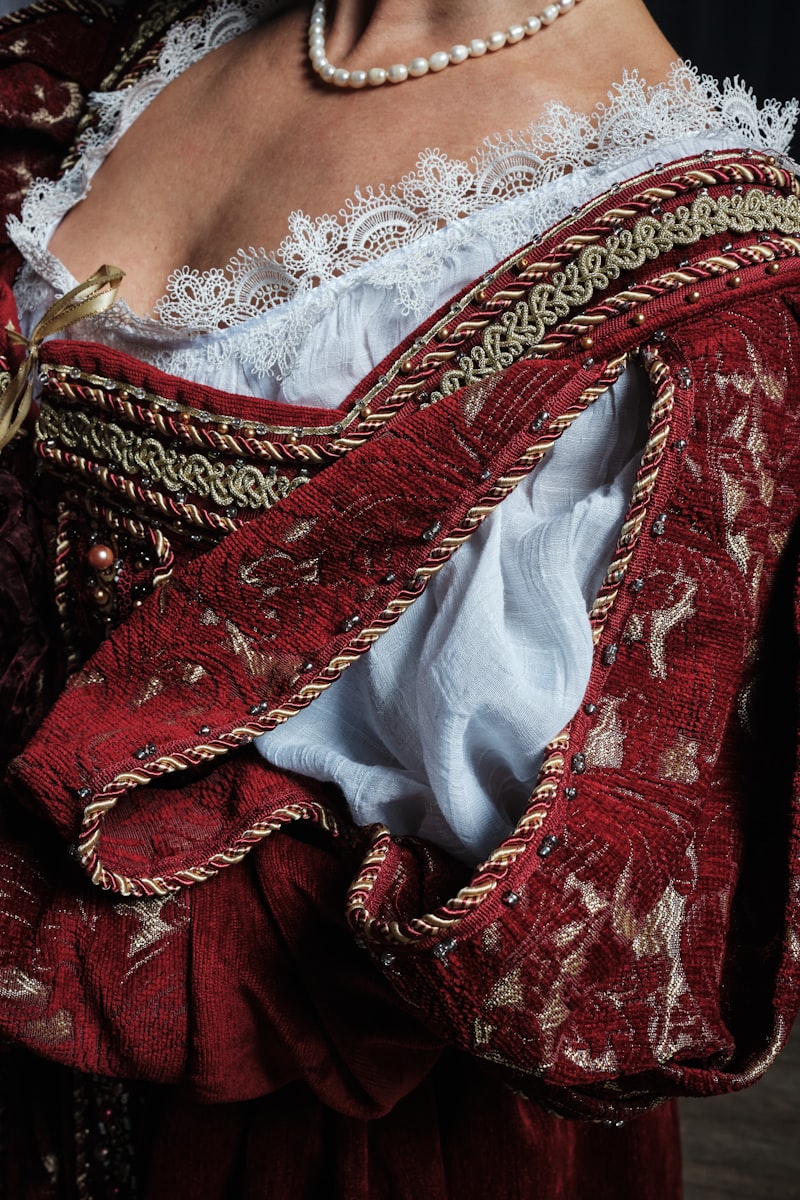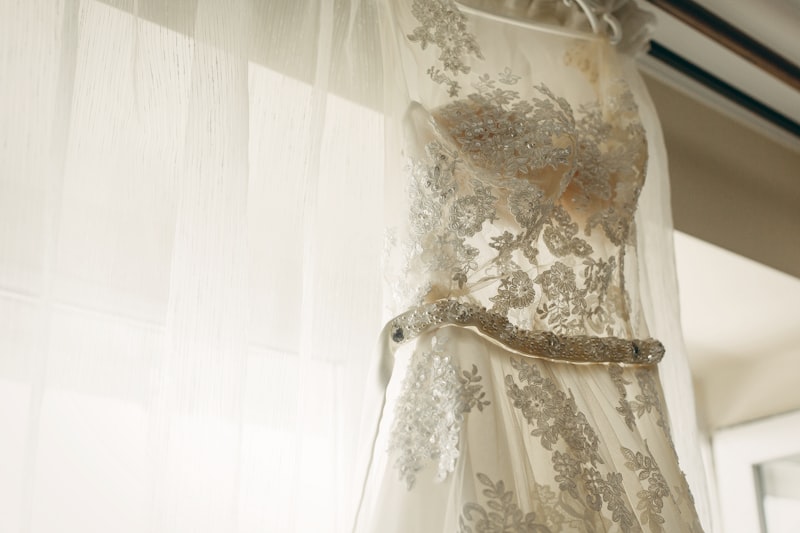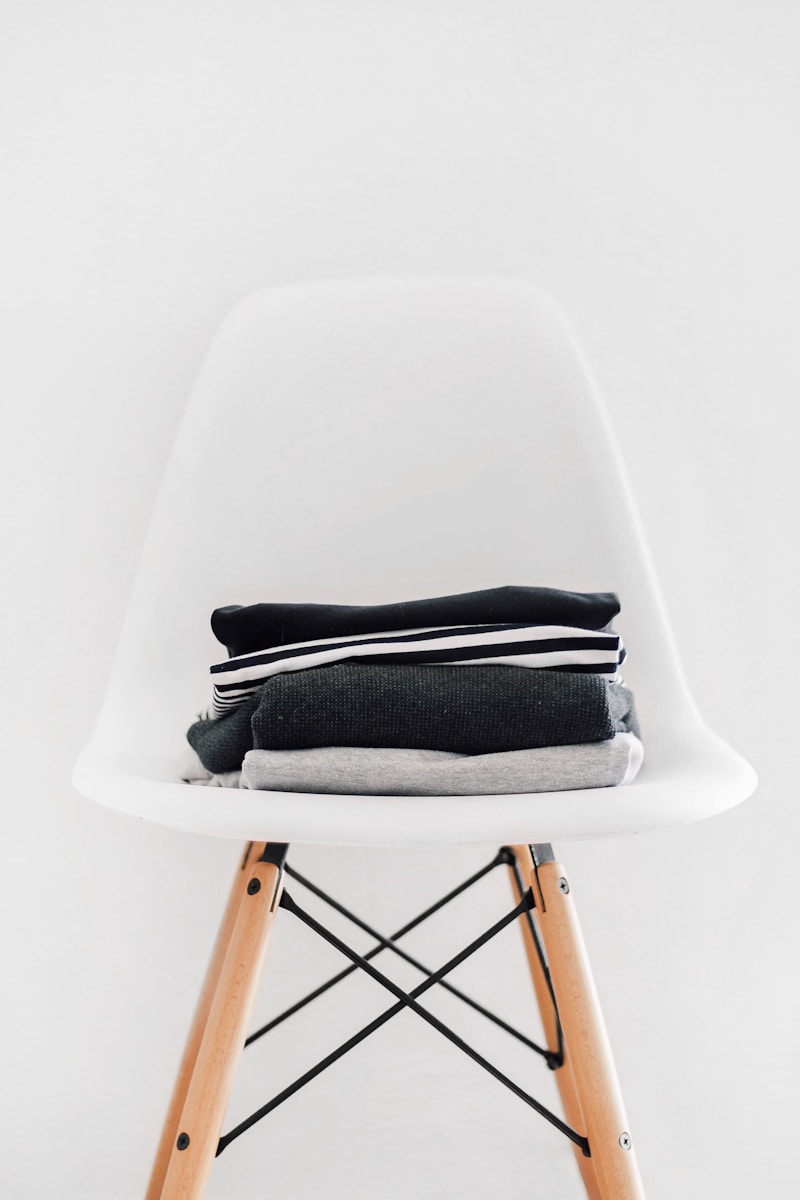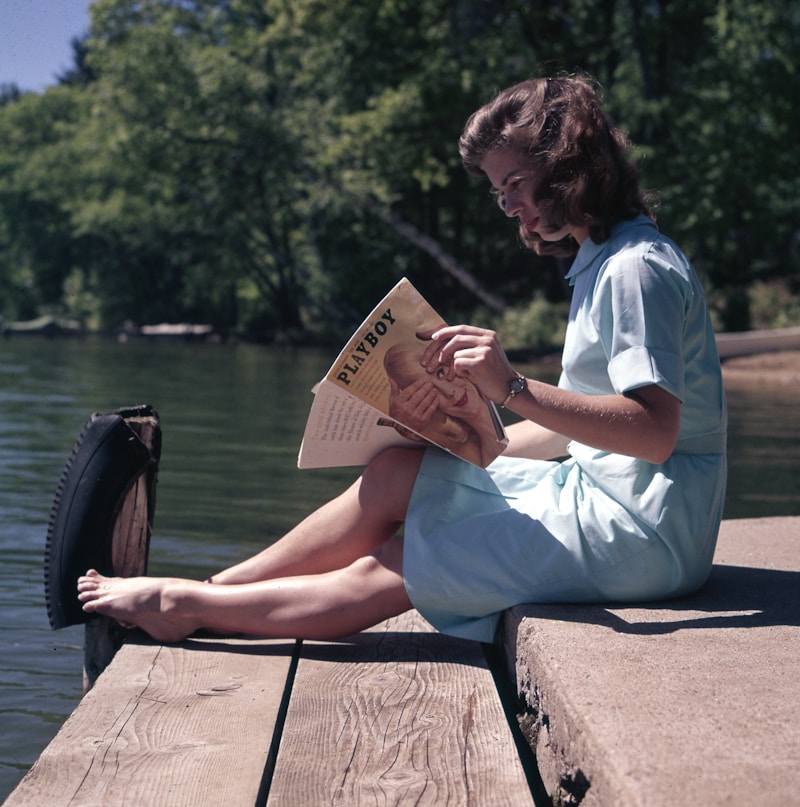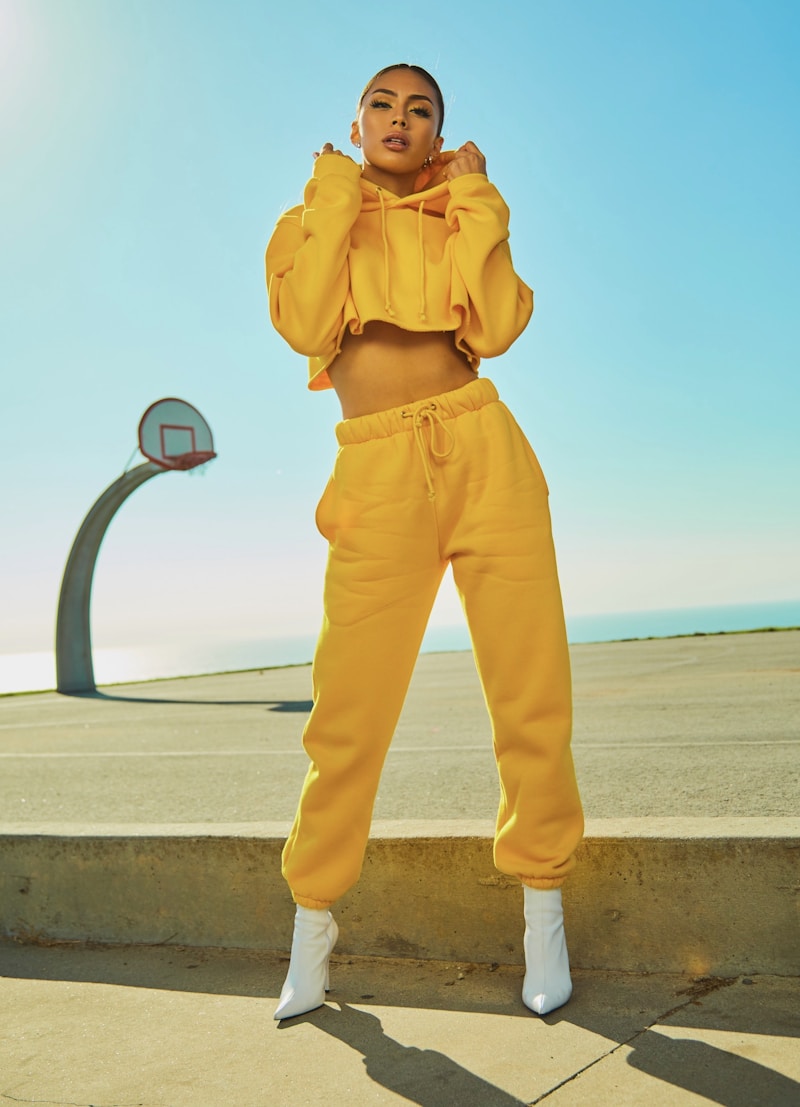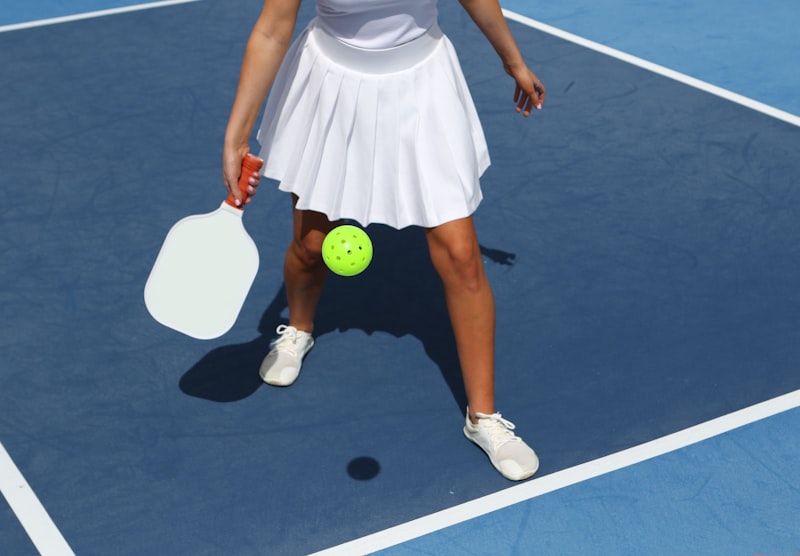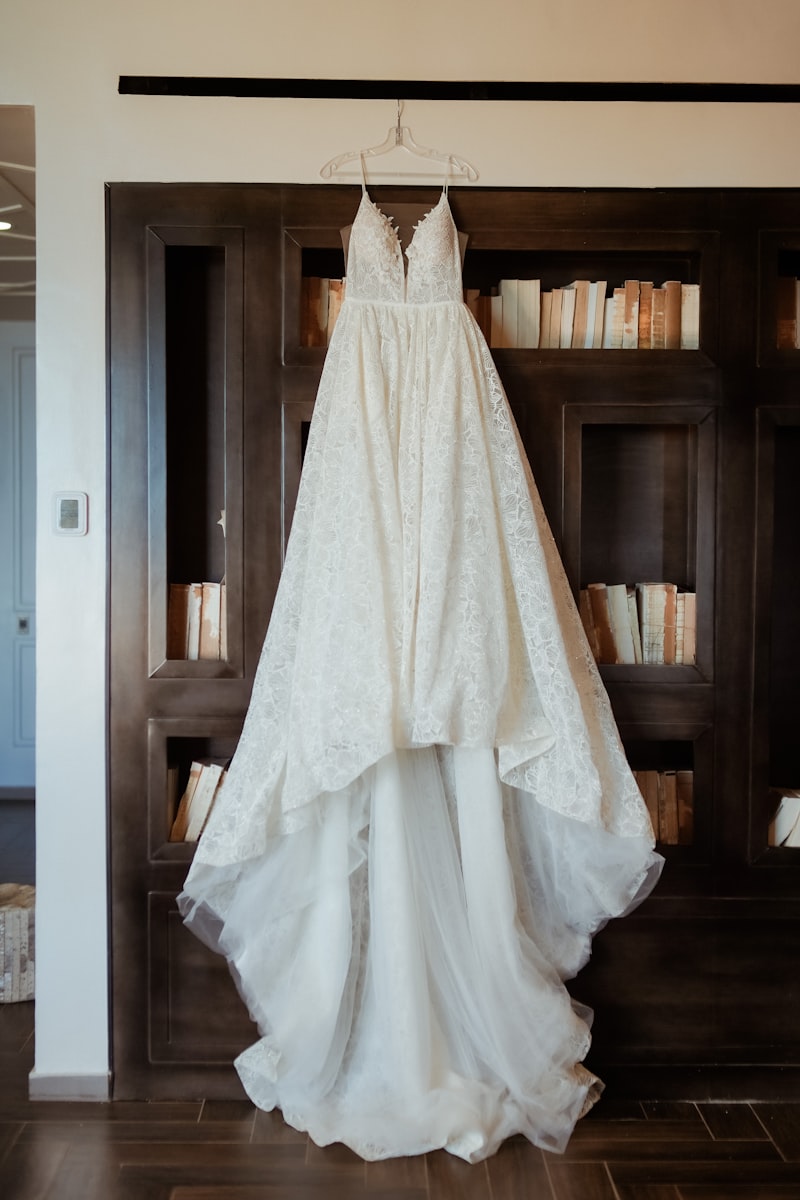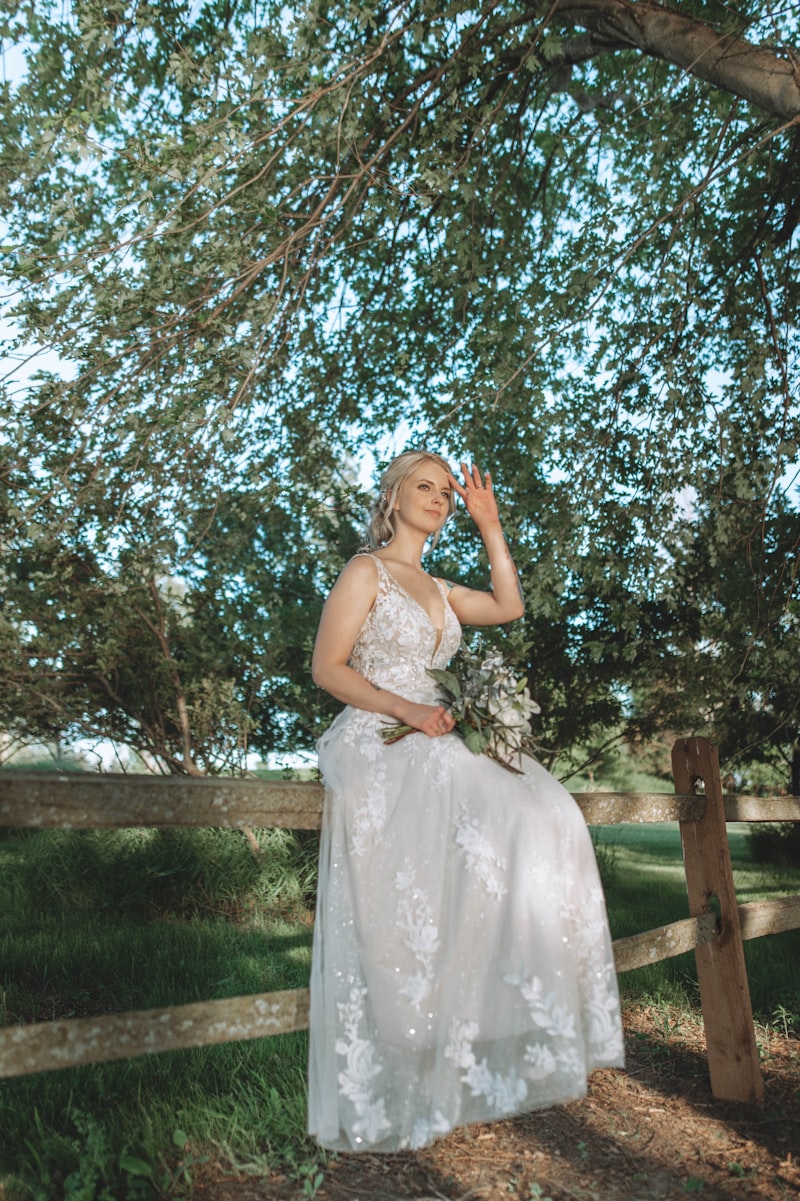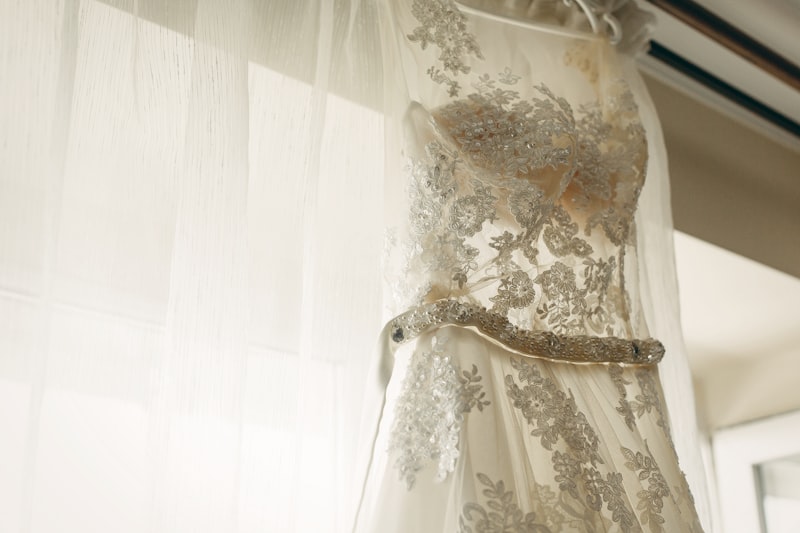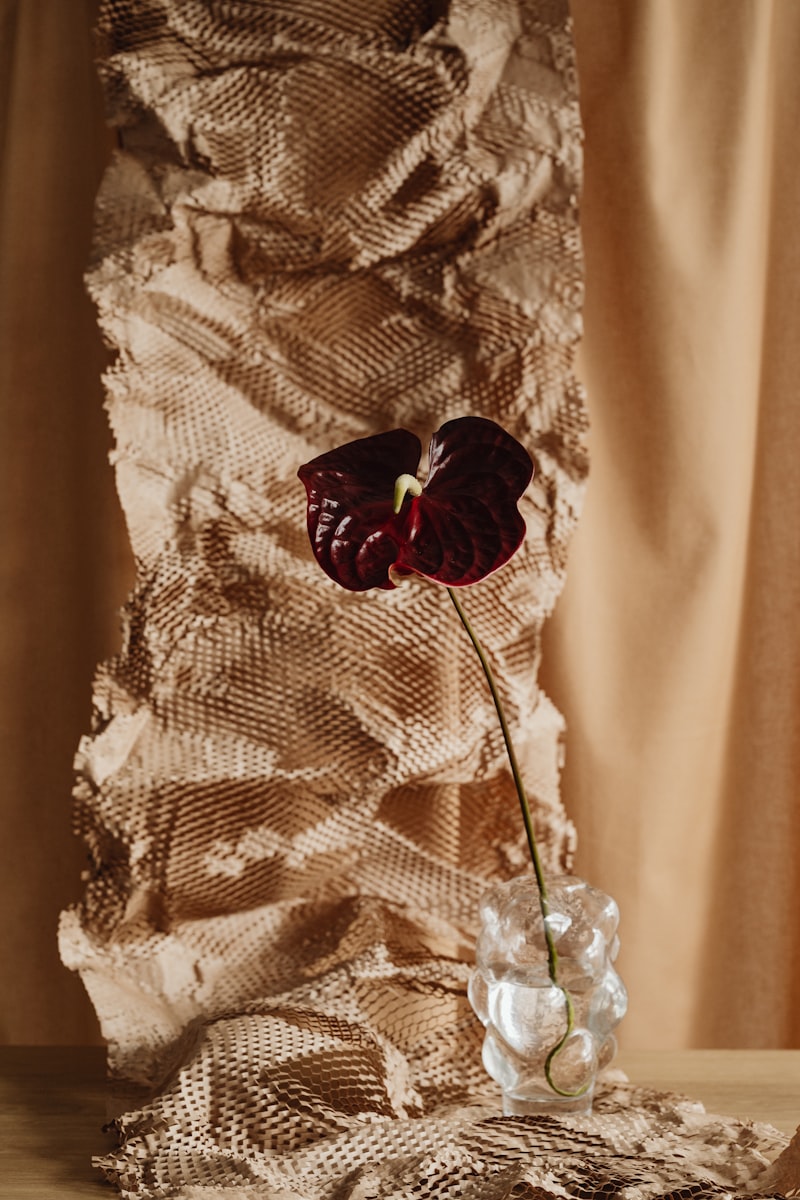Exploring the Symbolic Meanings Behind Wedding Dress Colors in History
Weddings have always been a significant cultural event, rich in traditions and symbolism. Among the many aspects of a wedding, the color of the wedding dress holds profound meaning, reflecting a bride's personality, cultural background, and historical influences. This article delves into the symbolic meanings behind wedding dress colors in history, exploring how colors have evolved in significance over time and across different cultures. The Evolution of Wedding Dress Colors Traditionally, wedding dresses were not always white. The choice of color varied significantly across different cultures and historical periods. While white has become the dominant color in many Western cultures since the Victorian era, a deeper understanding of the symbolic meanings of various colors reveals much about a bride's hopes and intentions. Let's explore some common wedding dress colors and their historical significance. 1. White: Purity and Innocence In Western culture, the white wedding dress became popularized by Queen Victoria in the 19th century when she wore a white gown for her marriage to Prince Albert in 1840. The color white symbolizes purity, innocence, and new beginnings, making it an ideal choice for brides looking to convey these sentiments. However, before Queen Victoria, brides often wore their best dresses, regardless of color, reflecting their social status. 2. Red: Love and Prosperity In many Asian cultures, red is the traditional color for wedding dresses. In countries like...
How Past Weddings Have Shaped Today's Bridal Trends
Weddings have always been a celebration of love, commitment, and cultural traditions. Over the years, these beautiful ceremonies have evolved significantly, shaping bridal trends that resonate today. Understanding how past weddings influence modern styles can offer brides-to-be invaluable insights into their special day. This article will explore the historical influences and highlight current bridal trends derived from them.The Evolution of Wedding TraditionsTraditions in weddings vary significantly across cultures, but many share themes of unity and festivity. A brief look at wedding traditions reveals how they have been transformed over time, leading us to contemporary bridal styles. Decade Wedding Trend Description 1920s Art Deco Glamour Influenced by the Jazz Age, featuring luxurious fabrics and intricate designs. 1950s Classic Elegance Ashift towards more modest and elegant gowns, inspired by royal weddings. 1980s Exaggerated Styles Characterized by large silhouettes and vibrant colors, taking cues from pop culture. 2010s Rustic Charm A nod to vintage and bohemian styles with outdoor and DIY elements. Influences from Historical WeddingsThe influence of historical weddings on today’s bridal trends is undeniable. For instance, royal weddings have set standards for elegance and grandeur. The wedding of Princess Diana in 1981 had a profound impact on bridal fashion, making the royal wedding dress a significant ...
The Intersection of Art and Bridal Design Through the Ages
The world of bridal design has undergone significant transformations influenced by the various art movements throughout history. From the intricate lacework of the Baroque period to the minimalist aesthetics of modern-day weddings, the intersection of art and bridal design reflects cultural changes, societal values, and technological advancements. In this article, we will explore how these two fields converge and evolve, allowing brides to express their individuality while honoring traditional designs. A Historical Overview of Bridal Design Bridal designs are deeply rooted in cultural customs and artistic movements. Here, we will explore several significant periods that illustrate the dynamic relationship between art and bridal fashion. The Renaissance (14th to 17th Century) The Renaissance marked a revival of classical art and literature. During this period, bridal gowns became elaborate, adorned with rich fabrics like velvet and silk. The use of embroidery and intricate patterns was prominent, reflecting the artistic advancements of the time. Bridal Features Artistic Influences Luxurious fabrics like silk and velvet Renaissance paintings and sculptures Intricate embroidery Patterns inspired by nature The Victorian Era (19th Century) The Victorian Era brought about significant changes in bridal fashion, with Queen Victoria's wedding to Prince Albert in 1840 being a pivotal moment. She popularized the white wedding gown, symbolizing purity and in...
Exploring Memorable Wedding Dress Styles from Different Cultures
Wedding dresses hold a significant place in various cultures worldwide, each style representing the unique heritage, traditions, and beliefs of different communities. Whether you are planning your own wedding or simply fascinated by the diversity of bridal fashion, this article will delve into the most memorable wedding dress styles from different cultures, showcasing their beauty and significance. Understanding the Importance of Wedding Dresses Wedding dresses symbolize love, commitment, and the union of two people from different backgrounds. They are often steeped in cultural significance, representing everything from purity and joy to tradition and social status. This is why many couples take great care in choosing their wedding attire, often inspired by their cultural heritage. Popular Wedding Dress Styles from Around the World CultureWedding Dress StyleKey Features Western (USA/Europe)Classic White GownLong train, lace details, often strapless IndiaSaree or LehengaBright colors, intricate embroidery, often paired with a dupatta ChinaQipao (Cheongsam)Fitted style, high collar, rich colors, and embroidery JapanShiarakushiWhite silk robe, layered with colorful obi sashes MexicoMexican Wedding DressVibrant colors, often adorned with floral designs Western Wedding Dresses The classic white gown has become synonymous with Western weddings, particularly in the United States and Europe. Iconic figures like Queen Victoria popularized this trend in the 19th centu...
The Uniqueness of Handmade and Bespoke Wedding Dresses in History
Exploring the Timeless Charm of Handmade and Bespoke Wedding DressesWedding dresses have long been a symbol of love, commitment, and artistry. The uniqueness of handmade and bespoke wedding dresses has a rich history steeped in tradition and personal expression. In this article, we will delve into the fascinating evolution of wedding dresses, the craftsmanship behind them, and the reasons why they hold such a special place in the hearts of brides worldwide.A Historical Overview of Wedding DressesThroughout history, wedding dresses have evolved dramatically, influenced by cultural shifts, fashion trends, and personal preferences. The earliest recorded instances of wedding attire date back to ancient Rome, where brides wore simple tunics. As time progressed, the materials and styles became more elaborate. The Victorian era marked a significant turning point with Queen Victoria's choice of a white gown, laying the foundation for the modern wedding dress.The Significance of Style and FabricThe style and fabric of wedding dresses have always played a crucial role in defining their uniqueness. While modern dresses often showcase a variety of fabrics and silhouettes, handmade and bespoke options stand out for their meticulous craftsmanship and personalization. Brides who choose these dresses can select from a myriad of fabrics, such as silk, lace, and chiffon, forming a garment that truly reflects their personality and preferences.EraStyleFabricAncient RomeSimple TunicsWool and Line...
How Historical Events Influenced Wedding Fashion Trends
Weddings have always been a celebration of love, but the way we dress for these occasions has been heavily influenced by historical events. From royal engagements to global conflicts, every significant moment in history has played a part in shaping wedding fashion. This article explores how various historical events have influenced wedding fashion trends over the decades, providing a thorough understanding of the sartorial changes that accompany societal shifts.The Evolution of Wedding AttireWedding attire has evolved significantly over the years due to various cultural influences and historical events. Each era brought its own trends, driven by not only fashion but also by significant happenings around the world.The Victorian Era and the White DressOne of the most notable shifts in wedding fashion occurred in the Victorian era, particularly after Queen Victoria married Prince Albert in 1840. The queen chose a white gown, challenging the tradition of brides wearing their best dresses, regardless of color.Victorian Era Wedding Fashion CharacteristicsKey InfluencesSignificant ColorsEmphasis on modesty and eleganceQueen Victoria’s marriageWhite and pastelsComplex lace detailsRise of the Industrial RevolutionSoft hues and delicate patternsThe Industrial Revolution played a role in making wedding dresses more accessible as fabrics became cheaper and more widely available. Brides were now able to don dresses that showcased intricate lace details, emphasizing both modesty and elegan...
The Impact of Films on Modern Bridal Fashion Choices
The world of bridal fashion is ever-evolving, and one of the most significant influencers of these trends is the film industry. From iconic dresses worn by beloved characters to the overall aesthetic presented in popular romantic comedies and dramas, films have played a vital role in shaping modern bridal fashion choices. In this article, we will explore the various ways films impact bridal fashion, highlight some memorable on-screen wedding dresses, and discuss how brides can incorporate cinematic styles into their own nuptial attire.1. The Cultural Influence of Cinema on Bridal TrendsFilms have a unique ability to shape cultural perceptions, including beauty standards, fashion trends, and lifestyle choices. When it comes to weddings, a film's portrayal can significantly influence what brides envision for their special day. Iconic scenes from movies can set trends that ripple through the bridal fashion industry, inspiring designers to create collections that reflect these cinematic moments.FilmWedding Dress DesignerFashion ImpactThe GodfatherFrancesca AvalloneVintage lace and classic silhouettesBridget Jones's DiaryVivienne WestwoodQuirky, unconventional stylesSex and the CityMonique LhuillierModern, glamorous gownsFather of the BrideValentinoRegal, traditional wedding dresses2. Iconic Wedding Dresses from Film HistoryMany brides look to the silver screen for inspiration when selecting their wedding attire. Iconic wedding dresses from influential films have solidified their ...
Fashion Statements Made by Wedding Gowns Across History
Wedding gowns have evolved dramatically throughout history, reflecting changes in fashion, social norms, and cultural values. From royal traditions to modern-day statements, the evolution of wedding dresses tells a fascinating story about femininity, status, and style. In this article, we will explore the significant fashion statements made by wedding gowns from the past to the present, analyze how they vary across cultures, and offer a glimpse into future trends.Historical Evolution of Wedding GownsThe history of wedding gowns is as rich as the fabric they are made from. While the tradition of wearing a special dress on the wedding day can be traced back to ancient civilizations, it was not until the 19th century that brides began to wear white gowns as a standard practice.The Early Days: Ancient CivilizationsIn ancient Rome and Greece, brides typically wore tunics made from colorful materials that symbolized fertility and prosperity. These gowns were often adorned with intricate designs and textiles, showcasing the bride's social status. In many cultures, the color of the gown varied, with brighter hues representing joy and celebration.The Victorian Era: The Rise of the White Wedding DressThe white wedding gown gained popularity in the Victorian era, largely thanks to Queen Victoria's marriage to Prince Albert in 1840. Queen Victoria wore a white gown made of silk satin, which was considered a radical choice at the time. This decision sparked a trend that continues to influ...
Famous Brides and Their Unforgettable Wedding Gowns: A Style Legacy
The Allure of Iconic Wedding GownsWeddings are not just celebrations of love; they are also a canvas for personal expression, style, and tradition. Among the many elements of a wedding, the bridal gown often takes center stage. Throughout history, many brides have captured the world’s attention with their unforgettable wedding gowns, setting benchmarks for style and elegance. In this article, we dive into the exquisite world of famous brides and their iconic wedding gowns, exploring the stories behind them and the trends they inspire.Historical Overview of Bridal FashionThe concept of the wedding dress has evolved tremendously over the years. In the past, brides wore their best dresses, often in shades of red or other colors, until Queen Victoria of England popularized the white wedding gown in 1840 during her marriage to Prince Albert. This shift initiated a trend that has persisted, albeit with various modern interpretations.Iconic Wedding Gowns Through the DecadesLet’s take a stroll down memory lane and examine some of the most famous brides and their unforgettable wedding gowns over the decades.DecadeBrideGown Description1950sAudrey HepburnHepburn wore a stunning gown designed by Givenchy, featuring a fitted bodice and a full skirt adorned with lace.1980sLady Diana SpencerDiana’s dress was an elaborate creation of silk taffeta and lace, complete with a 25-foot train designed by David Emmanuel.2000sKate MiddletonMiddleton's gown, designed by Sarah Burton for Alexander McQu...
Bridal Inspirations from Famous Love Stories and Myths: A Journey Through Timeless Romance
Weddings are often seen as the ultimate expression of love and commitment, and what better way to inspire your big day than by drawing from famous love stories and myths? This article explores how tales of passion and devotion can shape your wedding aesthetics, themes, and overall experience. Discover bridal inspirations derived from legendary couples that have captivated hearts throughout history. The Power of Stories in Wedding Planning Love stories from literature, folklore, and mythology provide rich imagery and symbolic meanings that can influence wedding decisions. From the ethereal beauty of Shakespeare's Romeo and Juliet to the grandiose romance of Hades and Persephone, each story offers unique insights into how love can be celebrated. 1. Classic Literature – Romeo and Juliet The tragic love story of Romeo and Juliet has inspired countless weddings with its themes of passion and forbidden love. Couples can incorporate elements like: Color Palette: Deep reds and purples to symbolize romance. Flower Arrangements: Roses, particularly red ones paired with lavender. Quotations: Include quotes from the play in your ceremony or reception decor. 2. Greek Myths – Hades and Persephone This myth is perfect for a couple who wants a unique, enchanted vibe for their wedding. Discuss elements such as: Seasonal Themes: Consider a fall or winter wedding, reflecting the time Persephone spends in the Underworld. Decor: Utilize pomegranates (a symbol of the myth) in ...
Celebrating Feminine Beauty: A Historical Perspective
Introduction to Feminine Beauty Through the AgesThroughout history, the concept of feminine beauty has evolved significantly, reflecting societal norms, cultural influences, and even political climates. From ancient civilizations to modern society, the ideals of beauty have changed, but the celebration of feminine beauty remains a powerful theme in art, literature, and everyday life. This article delves into the historical perspective of feminine beauty, examining how different eras and cultures have shaped the way we celebrate women’s aesthetics.The Ancient Civilizations: Beauty Ideals of the PastIn ancient civilizations, beauty was often linked with femininity, fertility, and power. For instance, in Ancient Egypt, beauty was embodied by goddesses like Hathor, who represented love, beauty, and joy. Egyptian women adorned themselves with cosmetics made from natural materials, showcasing their status and health. Similarly, Greek and Roman societies celebrated beauty through art and sculpture, immortalizing the female form in ways that continue to inspire artists today.Table: Beauty Ideals in Ancient CivilizationsCultureBeauty IdealsCosmetic PracticesAncient EgyptGoddess-like features, smooth skinUse of kohl, oils, and natural pigmentsAncient GreeceProportional figures, lack of imperfectionsUse of olive oil, honey, and natural exfoliantsAncient RomeBlonde hair, pale skin as a sign of wealthWhitening powders, use of natural dyesThe Middle Ages: A Time of TransformationAs we move...
Heritage and Modernity in Today’s Bridal Fashion Expressions
Understanding the Fusion of Heritage and Modernity in Bridal FashionIn the ever-evolving landscape of bridal fashion, the interplay of heritage and modernity creates a vibrant tapestry that reflects individuality, culture, and contemporary trends. Today, brides worldwide are embracing a unique blend of traditional elements and modern aesthetics that showcase their personal stories. This article delves into the fascinating dynamics of heritage and modernity in today’s bridal fashion expressions.The Significance of Heritage in Bridal FashionHeritage plays a crucial role in shaping one’s identity and reflecting cultural values through fashion. Many brides choose to incorporate traditional designs, fabrics, and accessories in their wedding attire to pay homage to their roots. This not only enhances their personal connection to their culture but also makes a statement about the importance of heritage in today's society. Some common elements of heritage bridal fashion include:ElementDescriptionTraditional FabricsSilks, brocades, and lace often worn across generations.Historical DesignsA-line gowns, dupattas, and intricate embroidery.Meaningful AccessoriesFamily heirlooms or cultural jewelry that adds depth to the attire.Brides’ Choices Reflecting HeritageBrides from various cultures add specific elements to their wedding gowns that tell a story. For instance, in Indian weddings, Lehengas are often complemented with intricate zari embroidery that symbolizes opulence and tradition. S...
Reviving Vintage Bridal Styles for Contemporary Weddings
The world of weddings is continuously evolving, yet there is an undeniable charm in vintage bridal styles that many contemporary brides wish to embrace. With a rich history that ranges from the elegance of the 1920s to the whimsical 1970s bohemian looks, these styles effortlessly blend nostalgia with modern trends. In this article, we will delve into how to integrate vintage bridal styles into contemporary weddings, discuss various vintage styles, and offer tips to ensure your wedding day is both timeless and trendy. Understanding Vintage Bridal Styles Vintage bridal styles encompass a variety of designs from the past hundred years, with influences from different cultural trends and technological advancements in fabric and tailoring. Each era has its unique characteristics that appeal to brides today. Here's a brief overview of some iconic styles: Era Characteristics Popular Fabrics 1920s Flapper dresses, drop waist, intricate beadwork Silk, chiffon, lace 1950s A-line skirts, fitted bodices, bold prints Taffeta, satin 1970s Long sleeves, flowing fabrics, bohemian accents Cotton, crochet, lace 1980s Puffy sleeves, dramatic silhouettes, lace overlays Organza, tulle The Allure of Vintage Design Today’s brides are increasingly drawn to vintage designs for several reasons. Firstly, they evoke a sense of nostalgia, perfect for creating a dreamy atmosphere. Secondly, many vintage styles are well-suited to personalized touches, allowing br...
Celebrating Diversity in Bridal Fashion History
Understanding the Rich Tapestry of Bridal FashionThe world of bridal fashion is as varied and rich as the cultures it emanates from. Throughout history, brides from all over the globe have adorned themselves in garments that reflect their heritage, traditions, and personal styles. In this article, we will delve into the fascinating evolution of bridal fashion, highlighting the celebration of diversity while making a case for its continuing relevance in today's globalized society. Whether you are a bride planning your big day, a fashion enthusiast, or simply curious about bridal attire, this comprehensive examination will illuminate the multiple layers that comprise this intricate subject.A Historical PerspectiveBridal fashion has evolved remarkably over the centuries, influenced by various social, economic, and cultural factors. Let's take a closer look at some notable historical milestones that have shaped the current landscape of brides' fashion across the world.Time PeriodRegionBridal Fashion InfluenceMiddle AgesEuropeHeavy fabrics and rich colors symbolized wealth and statusVictorian EraUnited KingdomIntroduction of the white wedding dress, popularized by Queen VictoriaEarly 20th CenturyUnited StatesFlapper style dresses reflecting the liberated status of womenModern DayGlobalDiverse cultural representations and fusion stylesCultural Significance of Bridal AttireBridal fashion serves not merely as a means of beautification but as a profound expression of culture and tradi...
Vintage Bridal Looks from Iconic Movies and Celebrities: Timeless Inspiration for Your Special Day
Weddings are a beautiful blend of romance, tradition, and personal style. When it comes to bridal fashion, there is an irresistible charm in vintage looks that has inspired brides for decades. In this article, we’ll explore some of the most memorable vintage bridal looks from iconic movies and celebrities that continue to captivate and inspire brides around the world. With carefully curated examples and insightful tips, this guide will help you find your perfect vintage style.The Allure of Vintage Bridal FashionVintage bridal looks are not just about wearing a dress; they encapsulate a specific period's elegance, charm, and romanticism. From the golden age of Hollywood to the bohemian trends of the 1970s, each vintage style offers something unique. These looks often feature intricate lace, dramatic silhouettes, and timeless accessories that can transform any bride into a vision of beauty.Whether you want to emulate the classic styles worn by legendary actresses like Grace Kelly or modern celebrities inspired by old Hollywood, there’s a vintage bridal look for everyone. Below, we highlight some standout examples from iconic films and famous figures.Iconic Vintage Bridal Looks1. Grace Kelly in 'Rear Window'Perhaps one of the most iconic bridal looks in film history belongs to Grace Kelly in Alfred Hitchcock’s classic 'Rear Window'. Her elegant gown, complete with a fitted bodice and voluminous skirt, showcased a timeless silhouette. The lace detailing and long sleeves made it a...
Timeless Elegance: Classic Wedding Gown Styles Inspired by Royal Brides
IntroductionYour wedding day is a momentous occasion, and choosing the perfect gown is an essential part of that experience. With centuries of royal weddings showcasing stunning wedding dresses, it’s no wonder brides-to-be seek inspiration from these regal styles. This article explores classic wedding gown styles inspired by royal brides and offers insights to help modern brides find their ultimate dress. We'll delve into designs that have stood the test of time, embodying elegance and grace while reflecting contemporary tastes.The Influence of Royal WeddingsRoyal weddings have always captivated the public's imagination. From Lady Diana Spencer's iconic gown to Meghan Markle's modern minimalist dress, royal brides have a knack for setting trends. The grandeur of these dresses often features exquisite fabrics, intricate details, and classic silhouettes that can inspire brides around the world. Here, we highlight some of the most notable styles that have emerged from royal weddings.1. The Classic Ball GownA staple in the world of wedding gowns, the classic ball gown is characterized by its voluminous skirt and fitted bodice. Typically made from luxurious fabrics like silk or taffeta, this style is perfect for brides who wish to create a fairy-tale wedding atmosphere. Inspired by royal gowns such as that of Queen Elizabeth II, the ball gown remains a timeless choice.Features of a Classic Ball GownFull skirt with layersFitted bodiceAvailable in various necklinesEmbellishments lik...
Fashion-Forward Twists on Historical Wedding Dress Designs
As we step into a new era of bridal fashion, contemporary designs are taking inspiration from the past, particularly from historical wedding dress trends. In this article, we will explore how modern designers are adding fashion-forward twists to vintage styles, resulting in unique and stunning wedding dresses that excite brides and wedding enthusiasts alike. Whether you are looking for something classic yet with a modern edge or a gown that tells a story of the past, this article will guide you through the fascinating intersection of history and contemporary fashion. The Evolution of Wedding Dresses Wedding dresses have undergone significant transformations over the centuries, shaped by cultural influences, societal norms, and advancements in textile technology. Historical wedding dress designs often reflect the time period's values and aesthetics. For example, the Victorian era was known for its opulent fabrics and intricate embellishments, while the 1920s embraced a more simplistic, flapper-inspired silhouette. As we delve deeper into historical designs, we will discover how modern designers reinterpret these classic gowns. Key Historical Wedding Dress Inspirations Era Style Characteristics Modern Twists Victorian (1837-1901) Full skirts, high collars, intricate lace, and corsetry Lightweight fabrics, off-the-shoulder necklines, and incorporation of color 1920s Drop-waisted silhouettes, embellishments like beads and sequins Streamlined cuts with mo...
Exploring Bridal Fashion Trends Throughout the Decades: A Journey Through Time
Weddings are one of life’s most cherished occasions, and bridal fashion has evolved tremendously over the decades. Each era has contributed unique styles, fabrics, and trends that reflect the cultural, social, and economic environments of the time. In this article, we will explore the bridal fashion trends that have shaped wedding attire from the 1920s to the present day, uncovering how these trends have influenced modern bridal wear. We will also delve into related questions, such as the significance of bridal colors and the impact of celebrities on wedding dress styles. Let’s take a closer look!The Roaring Twenties: A New Age of FreedomThe 1920s were characterized by a sense of liberation and a break from traditional values. Bridal fashion mirrored this shift, with a focus on simplicity and elegance. The Empire silhouette gained popularity, featuring high waistlines and flowing skirts.Brides often chose lace or silk, adorned with pearls and sequins. The iconic flapper dresses influenced wedding attire, with short hemlines and intricate beadwork. Many brides donned cloches instead of traditional veils, embracing the decade’s signature styles.The Thirties: Glamour and SophisticationAs the Great Depression gripped the nation, thirties bridal fashion focused on refinement. Wedding dresses became more structured, emphasizing elegance. Long sleeves and high necklines were common, reflecting the era’s penchant for sophisticated styles.Bridal Fashion ElementsFeatures1920sEmpire sil...
Exploring Influential Bridal Couture Designers of the Past: A Journey Through Timeless Elegance
Bridal couture has always been a fascinating realm of fashion, where creativity meets tradition, resulting in exquisite garments that symbolize love and celebration. The history of bridal couture is rich with influential designers whose work has not only shaped the industry but also left an indelible mark on wedding fashion. In this article, we will explore the most influential bridal couture designers of the past, their iconic designs, and their lasting impact on modern bridal wear.The Evolution of Bridal CoutureBridal couture has evolved significantly over the decades, reflecting changes in societal norms, fashion trends, and the overall perception of weddings. The early 20th century marked the beginning of bridal fashion as we know it today. Designers began crafting stunning dresses that were not only made for the big day but were also considered works of art. Iconic designers such as Coco Chanel, Vera Wang, and Christian Dior transformed bridal wear, making it an essential part of the fashion industry.Coco Chanel: A Revolutionary InfluenceCoco Chanel, known for her timeless designs and the introduction of the little black dress, also left her mark on bridal couture. In the 1920s, she popularized the idea of simplicity, elegance, and comfort. Chanel’s bridal designs often featured clean lines, soft fabrics, and a touch of masculinity, revolutionizing the perception of bridal wear. Her 1920s wedding gown, made from satin and adorned with lace, is still referenced by contemp...
Discovering the Influential Bridal Dress Landmarks of the 20th Century
The 20th century was a remarkable era for bridal fashion, with numerous influential bridal dress landmarks that shaped how brides dress on their special day. From exquisite designs to innovative trends, this century witnessed a transformation in wedding attire that reflects cultural shifts, iconic figures, and evolving societal norms. In this article, we will explore these key milestones, celebrating the evolution of bridal dresses and their significance in defining bridal beauty and elegance through the ages.The Rise of the Modern Bridal GownAt the start of the 20th century, bridal fashion began to shift dramatically. The popularity of the white wedding dress was largely attributed to Queen Victoria, who wore a white gown for her marriage to Prince Albert in 1840. However, it wasn't until the 1920s that the modern bridal gown truly began to take shape. The flapper era introduced a more relaxed silhouette and showcased simple yet elegant designs. Designers like Coco Chanel were influential in this time, favoring less ornate styles that liberated women from the constraints of traditional corsetry.Iconic Designers and Their ImpactAs the decades progressed, significant designers emerged, each contributing unique styles that would influence bridal fashion. In the 1930s, Madeleine Vionnet introduced bias-cut gowns that hugged the body’s natural curves, enhancing femininity. The 1940s and 1950s saw the emergence of styles from designers like Christian Dior, whose "New Look" feature...
